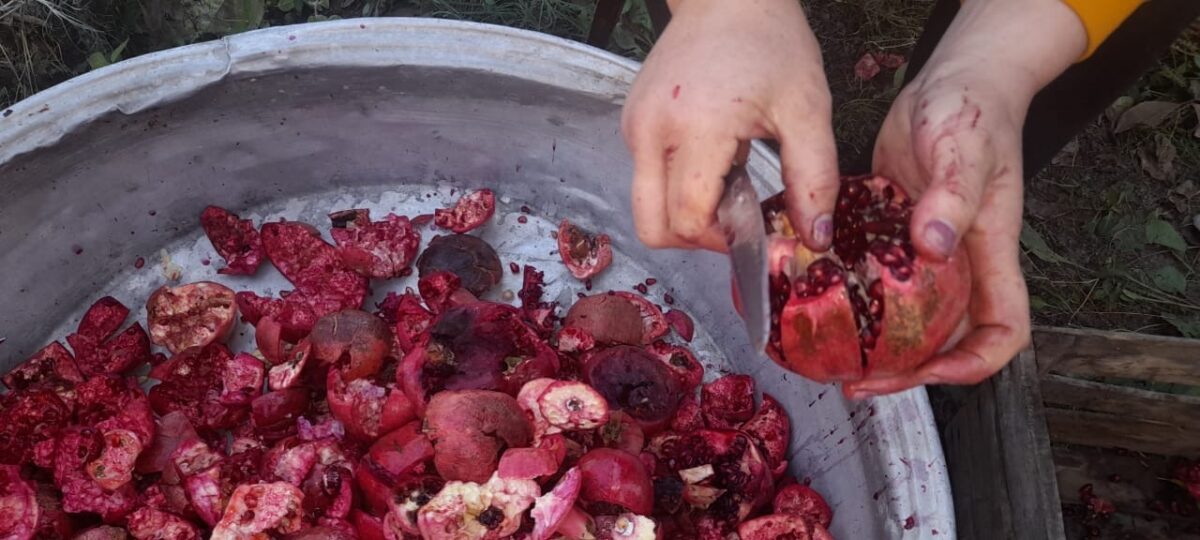“We make wine from fully ripe, thick-skinned and juicy “Gulovsha” variety, so that it is tasty and juicy. The taste and the name of the wine we make from pomegranates are by heart.”
Rena Aliyeva, a resident of Goychay, has been making wine during Autumn for years. She says that this is a tradition of “thanking Autumn”. That is, it is necessary to make abundant harvest and wine.
Goychay is known as the “motherland of pomegranates”, with different variations of the fruit that can only be found there, and holds a Pomegranate Festival every year.
As pomegranate yield is good this year as well, and pomegranate wine is made naturally in every village, they predict a good production ahead.

“Since my childhood, I have seen this tradition that after the abundant harvest in the pomegranate orchards, our grandparents collect fully ripe, red large-grained, juicy pomegranate varieties and grind them. Because wine does not come from unripe pomegranates. Therefore, most of the time, the wine is made at the beginning of November. At this time, the pomegranate tree is a real winery,” explains Rena Aliyeva.
According to her, it is possible to make wine from damaged pomegranates, as long as the pomegranates are not wasted: “Most importantly, we try to make sure that all those pomegranate seeds are healthy. Because rotten, damaged pomegranate seeds change the taste of the wine”.
Mrs. Aliyeva says that the wine should be made in a large pot, on the stove, with a mixture of “Gülovsha” and “Valas” pomegranate varieties.

After the women have finished crushing the pomegranate, they wash it with clean water. Then they filter the water completely and collect it in a bowl. A pot full of pomegranate is placed on the stove and pomegranate seeds are added. One liter of water should be added to more than ten kilograms of pomegranate seeds, – says Rena Aliyeva. Because water causes the pomegranate to separate from the stem. Thus, the initial stage of wine preparation takes place. “It is necessary to stir often, even with a wooden spoon”, she adds.

After the solidified wine is removed, it is separated from the grapes. Pomegranate leaves are cooked again on high heat to turn them into resin. It is mixed until completely solidified so that it does not burn.
Our interviewer says that around three kilograms of wine is bought from 15-20 kilograms of pomegranates. It is also possible to store wine for around two years.

Rena Aliyeva says that preservatives and color additives are not added to the home-made wine. She finds this practice unacceptable.
“Factory wine and juice are branded according to their packaging, but they taste bitter, not pleasant. Because it is made from damaged products and is pulled together with the shell. That’s why those who taste real home-made wine understand the difference”, she adds
Aliyeva talks with intusiasm about the Pomegranate Festival, where people bring their fruits and pomegranate products and displayed them. According to her, this is an interesting festival to introduce national cuisine:
“The guests who came knew, tasted, bought and learned about delicious products made from pomegranate, not just pomegranate.”
Pomegranate wine can be used as a spice in fish, kebab, pilaf and other dishes. In addition to it, natural pomegranate juices is also produced, which have a special taste and character.



